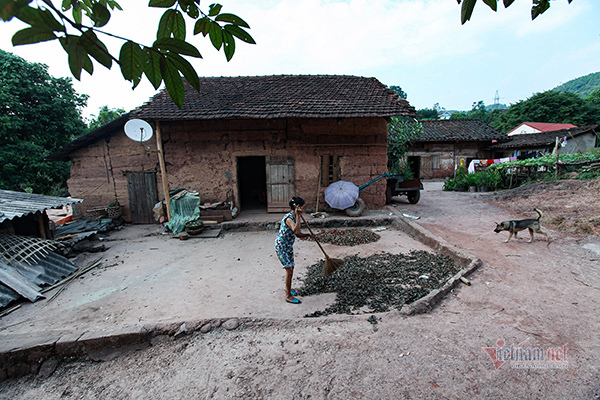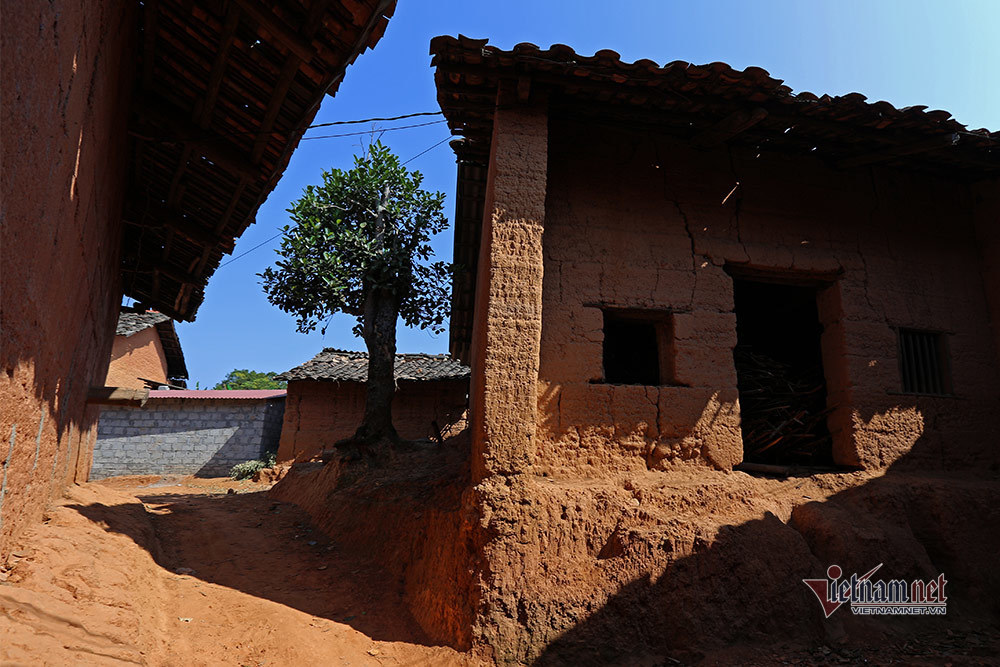 |
| A trinh tuong house and kitchen made of clay in Khieng Village. — VNA/VNS Photo Anh Tuan |
These unique houses are made completely of clay but they are very solid and firm. Some of them have existed for decades.
A trinh tuong house usually has two floors with three rooms, and two outhouses used as storage and a kitchen. The altar is placed in the middle of the house. Behind the altar is the room for the elderly. There is a yard for drying paddy, rice, and maize and even clothes in front of the house.
 |
| Farming tools are hung on the walls outside a trinh tuong house in Khieng Village. — VNA/VNS Photo Anh Tuan |
As they are made of clay, this kind of house is sustainable, economical, warm in winter, and cool in summer. They are resistant to the wind and heat.
It is estimated that Lang Son Province now has around 1,000 earthen houses, most of which are located in border districts like Dinh Lap, Van Lang and Trang Dinh.
 |
| The altar is placed in the middle of the house. — VNA/VNS Photo Anh Tuan |
As the living standards of the villagers have been improved in recent years, more concrete and brick houses have been built, replacing ancient earthen houses.
According to Nong Huu Tuan, head of Khieng Village in Huu Khanh Commune, the village is home to 170 households, most of whom are Tay and Nung ethnic people. However, just 30 per cent of the local households still owns earthen houses that have been passed down from their ancestors.
 |
| Just 30 per cent of Khieng Villagers are still living in the earthen houses that have been passed down from their ancestors. — VNA/VNS Photo Anh Tuan |
In recent years, the local authorities have taken various measures to save trinh tuong houses, which have been closely associated with the culture of local communities, from the risk of disappearing.
“Lang Son Provincial Department of Culture, Sports and Tourism cooperated with district authorities to build plans on preserving the cultural heritage, the major point of which is improving locals’ awareness on preserving trình tường houses,” said Nguyen Phuc Ha, director of the department.
 |
| A two-storey trinh tuong house that is nearly 100-years-old in Khieng Village. — VNA/VNS Photo Anh Tuan |
“At the same time, the model of community-based tourism in the villages where many earthen houses are being preserved will continue to be studied and multiplied on a larger scale, in an effort to combine tourism with preservation,” he added.
Source: Vietnam News

Unique “trinh tuong” houses of Tay and Nung people
The northern border province of Lang Son is the home to 7 ethnic groups, which has long been famous for traditional houses called “trinh tuong” of the Tay and Nung people.

Secrets about made-of-clay houses in Lang Son
Po Kit village in Khuat Xa communes in Loc Binh district in the northern mountainous province of Lang Son with 53 households has preserved 29 original trinh tuong houses.